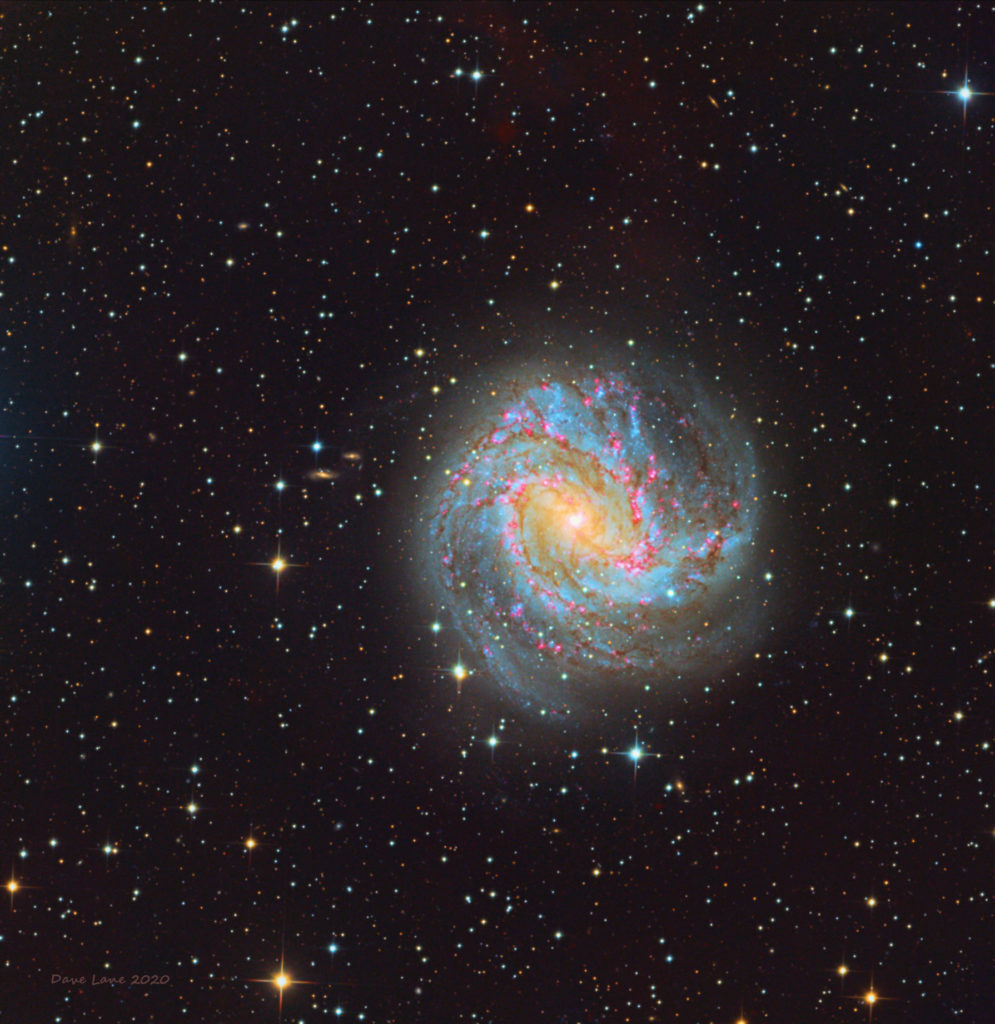Sky Report July 20 – July 26

This spring two comets that were expected to become bright failed us, but a third comet discovered only in late March snuck up on us and put on an unexpectedly great show in the morning sky during the first week of July when it was easily visible to the naked eye. Named Comet NEOWISE, it now is in the evening sky. Comets are notoriously unpredictable, but according to the best projections the comet should be easily visible to the unaided eye and a wonderful sight in binoculars and small telescopes for the next week or more. It passed closest to the sun on July 3 and passes a not-very-close 64 million miles from earth on the 23rd, so it is fading slowly as it leaves the inner solar system. This week it moves through Ursa Major, passing below the Big Dipper, and you can see it in the northwest as soon as the sky grows dark. Look for a bright star-like nucleus made of ice and dirt and a tail which points up and away from the sun. The solid nucleus is 3 miles in diameter, which is the size of a large mountain, and the tail, which is made of dust shed by the evaporating nucleus, stretches for tens of millions of miles. Comet NEOWISE won’t return for 6,000 years, so see it now. Google “Comet NEOWISE” for additional information and finding charts.
Elsewhere, four bright planets are visible tonight. Jupiter and Saturn rise together and you can see them low in the southeast from 9 PM. Jupiter is the brighter of the two and Saturn is immediately to the left; both are brighter than any stars.
Mars rises near 1 AM and it too is brighter than any star. Note its pale orange color which comes from rusted iron minerals on its surface. The earth is approaching Mars and Mars is growing brighter week by week. Mars is in the constellation Cetus, according to the way modern astronomers divide the sky, and it moves into Pisces on 27th.
Venus rises in the east at 4 AM and then it’s the brightest object in the nighttime sky except the moon. At 5 AM all four planets are visible, spread across the sky.
The thin crescent moon is just above the star Regulus in Leo on the evening of the 22nd and near the star Spica in Virgo on the 25th and 26th.
The Sky Report is presented as a public service by the Stellar Vista Observatory, a nonprofit organization based in Kanab, Utah, which provides opportunities for people to observe, appreciate, and comprehend our starry night sky. Additional information is at www.stellarvistaobservatory.org. Send questions and comments to
John@StargazingAdventures.org.






Comments are closed.